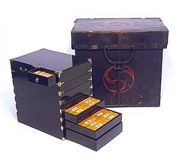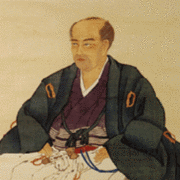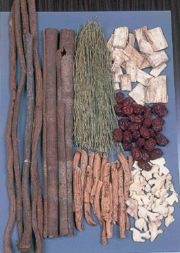Category:CD
m (→{{Bilingual|なぜ漢方という名前にこだわるか?|Why do we care Chinese or Japanese medicine?}}) |
|||
| (5 intermediate revisions by one user not shown) | |||
| Line 4: | Line 4: | ||
<big>{{Bilingual|メ ニ ュ ー|M e n u}}</big> | <big>{{Bilingual|メ ニ ュ ー|M e n u}}</big> | ||
</center> | </center> | ||
| − | |||
{{CrudeDrug/Header}} | {{CrudeDrug/Header}} | ||
=={{Bilingual|漢方|Kampo Medicine}}== | =={{Bilingual|漢方|Kampo Medicine}}== | ||
| − | ==={{Bilingual| | + | ==={{Bilingual|漢方はChinese Medicineではない|Kampo is not Chinese Medicine}}=== |
{| | {| | ||
| | | | ||
| Line 18: | Line 17: | ||
| | | | ||
;日本固有の医療としての漢方 | ;日本固有の医療としての漢方 | ||
| − | 「漢方」(文字通りでは漢の医方)は日本が[[Index:TCM|伝統中医学]](TCM)を独自に発展させたもので、16世紀には既に医術として確立していたようです。言葉自体は西洋医学(蘭方)に対する言葉として江戸時代中期に使われ始めました。TCMとの顕著な違いは'''漢方は西洋薬と同じ枠組みの中で処方される''' | + | 「漢方」(文字通りでは漢の医方)は日本が[[Index:TCM|伝統中医学]](TCM)を独自に発展させたもので、16世紀には既に医術として確立していたようです。言葉自体は西洋医学(蘭方)に対する言葉として江戸時代中期に使われ始めました。TCMとの顕著な違いは'''漢方は西洋薬と同じ枠組みの中で処方される'''という点です。日本において漢方はいわゆる代替医療ではなく、西洋医療と対立する概念でもありません。 |
<br/> | <br/> | ||
| − | 世界保健機構(WHO) | + | 世界保健機構(WHO)の用語集で漢方は「古代中国の医薬に基づいて日本で伝統的に使われる医薬」と定義されています。英訳として"the traditional Japanese medicine"としてしまうと鍼灸を含んでしまうため、英語訳には注意が必要です。 |
}} | }} | ||
| | | | ||
| Line 26: | Line 25: | ||
|} | |} | ||
| − | ==={{Bilingual| | + | ==={{Bilingual|なぜ漢方というか?|Why do we care Chinese or Japanese medicine?}}=== |
{| | {| | ||
|valign="top"| | |valign="top"| | ||
{{Twocolumn| | {{Twocolumn| | ||
| − | + | Are we sensitive as to whether Kampo is Japanese or Chinese? | |
| − | Western medicine is based on chemical structures, and each structure is (or was) patented. In this sense, their origin is clear. On the other hand, traditional (especially herbal) medicine is one major intellectual-property issue related to biological diversity. It is therefore important to clarify origins and install an appropriate international standard | + | Western medicine is based on chemical structures, and each structure is (or was) patented. In this sense, their origin is clear. On the other hand, traditional (especially herbal) medicine is one major intellectual-property issue related to biological diversity. It is therefore important to clarify origins and install an appropriate international standard. |
| − | + | ||
| − | + | ||
| | | | ||
| − | + | 漢方の英訳は、ChineseでしょうかJapaneseでしょうか。 | |
西洋薬は化合物に基づくため、それぞれの構造には特許が申請されていて、権利の帰属が明らかです。 | 西洋薬は化合物に基づくため、それぞれの構造には特許が申請されていて、権利の帰属が明らかです。 | ||
それに対して、伝統医薬の知的財産権は生物多様性の議論の中でも大きな問題になっています。 | それに対して、伝統医薬の知的財産権は生物多様性の議論の中でも大きな問題になっています。 | ||
| − | このため、伝統医薬の起源を明らかにし、適切な国際標準化をおこなうことが大切です。< | + | このため、伝統医薬の起源を明らかにし、適切な国際標準化をおこなうことが大切です。 |
| − | + | }} | |
| + | <!--- | ||
| + | {{Twocolumn| | ||
| + | Let us consider the invention of general anesthetic. Hanaoka Seishu (Japan) succeeded in breast cancer surgery (with clear records) under general anesthesia with Kampo medicine in 1804 (see [http://en.wikipedia.org/wiki/Hanaoka_Seish%C5%AB Wikipedia]). | ||
| + | |||
| + | Historically, however, Hua Tuo in ancient China (ca. AD 145-220?) was believed to have invented general anesthesic ''Ma fei san'' and performed abdominal section. The credibility of this episode in the 3rd-century Sanguozhi (三國志 "Records of Three Kingdoms") and 5th-century Hou Hanshu (後漢書 "Book of the Later Han") is detailed in a Wikipedia article of [http://en.wikipedia.org/wiki/Hua_Tuo Hua Tuo]. | ||
| + | | | ||
| + | 例として、全身麻酔の開発者について考えてみます。 | ||
華岡青洲は文化元年(1804年)、漢方処方で全身麻酔を成功させました([http://ja.wikipedia.org/wiki/%E8%8F%AF%E5%B2%A1%E9%9D%92%E6%B4%B2 Wikipedia] 参照)。しかし、麻沸散と呼ばれる類似処方による麻酔を最初に開発し、腹部切開手術をしたのは華佗 (紀元145-220?) とも言われています。 | 華岡青洲は文化元年(1804年)、漢方処方で全身麻酔を成功させました([http://ja.wikipedia.org/wiki/%E8%8F%AF%E5%B2%A1%E9%9D%92%E6%B4%B2 Wikipedia] 参照)。しかし、麻沸散と呼ばれる類似処方による麻酔を最初に開発し、腹部切開手術をしたのは華佗 (紀元145-220?) とも言われています。 | ||
その処方および三國志、後漢書といった歴史書の信憑性については、英語版のWikipedia [http://en.wikipedia.org/wiki/Hua_Tuo Hua Tuo] で詳しく論じられています。 | その処方および三國志、後漢書といった歴史書の信憑性については、英語版のWikipedia [http://en.wikipedia.org/wiki/Hua_Tuo Hua Tuo] で詳しく論じられています。 | ||
}} | }} | ||
| − | + | ---> | |
;{{Bilingual|用語のまとめ|Summary}} ([[Index:CDterminology|{{Bilingual|詳細|more detail}}]]) | ;{{Bilingual|用語のまとめ|Summary}} ([[Index:CDterminology|{{Bilingual|詳細|more detail}}]]) | ||
{{Twocolumn| | {{Twocolumn| | ||
Latest revision as of 12:49, 1 September 2016
Kampo/Crude Drug Wiki (漢方・生薬Wiki)
Contents |
M e n u
| Crude-drug Top Gallery |
General Index | Names | Prescriptions | Books | Journals | Terminology | Chinese Medicines |
[edit] Kampo Medicine
[edit] Kampo is not Chinese Medicine
|
In the WHO document, Kampo is defined as "the medicine traditionally practiced in Japan, based on ancient Chinese medicine". We might call it "the traditional Japanese medicine" but this expression should include acupuncture and moxibustion treatment and is a larger concept than Kampo. |
 Portable Medicine Cabinet (Edo era; 1862) Reproduced with permission from Naito Museum of Pharmaceutical Science and Industry |
[edit] Why do we care Chinese or Japanese medicine?
|
Are we sensitive as to whether Kampo is Japanese or Chinese? Western medicine is based on chemical structures, and each structure is (or was) patented. In this sense, their origin is clear. On the other hand, traditional (especially herbal) medicine is one major intellectual-property issue related to biological diversity. It is therefore important to clarify origins and install an appropriate international standard.
|
 Some of his recipes are still officially approved and used: Shiunko, Chuoko, and Jumihaidokuto. Picture is from Wikipedia.  Recipe for "Kakkonto", or pueralia root decoction (More) |
[edit] Kampo Standards
[edit] The New Standards for Kampo Formulas
In early 1970, the Ministry of Health and Welfare (now Health, Labor and Welfare) summarized the byelaw published as "Guideline for General Kampo Formulas" (Edited by MHW and the committee in FPMAJ, Published by Jiho), which has been known as 'The 210 formulas' for 30 years. In 2008, it underwent a significant revision and 213 formulas are listed as "Standards of Approval for the Kampo Formulation". The difference is introduced here (in Japanese).
[edit] Japanese Pharmacopoeia
(Japanese) Pharmacopoeia is a book with legal force containing directions to identify and qualify medicinal compounds that may be used in Japan. Its revision process therefore requires utmost attention. Since it is a legal document, there are some side effects such as for the scientific name of Cinnamon.
- Details (only in Japanese)
[edit] about this site
[edit] Crude Drug Information
In the Japanese Pharmacopoeia, around 160 crude drugs are listed. This site introduces their details with links to available Kampo formulas.
[edit] Literature Information
This site contains 7677 article information on Kampo formulas. They are listed at the bottom of each page for Kampo prescription.
[edit] Availability, Production Methods, Examinations
[edit] Image Gallery
[edit] Society Information
Pages in category "CD"
The following 8 pages are in this category, out of 8 total.